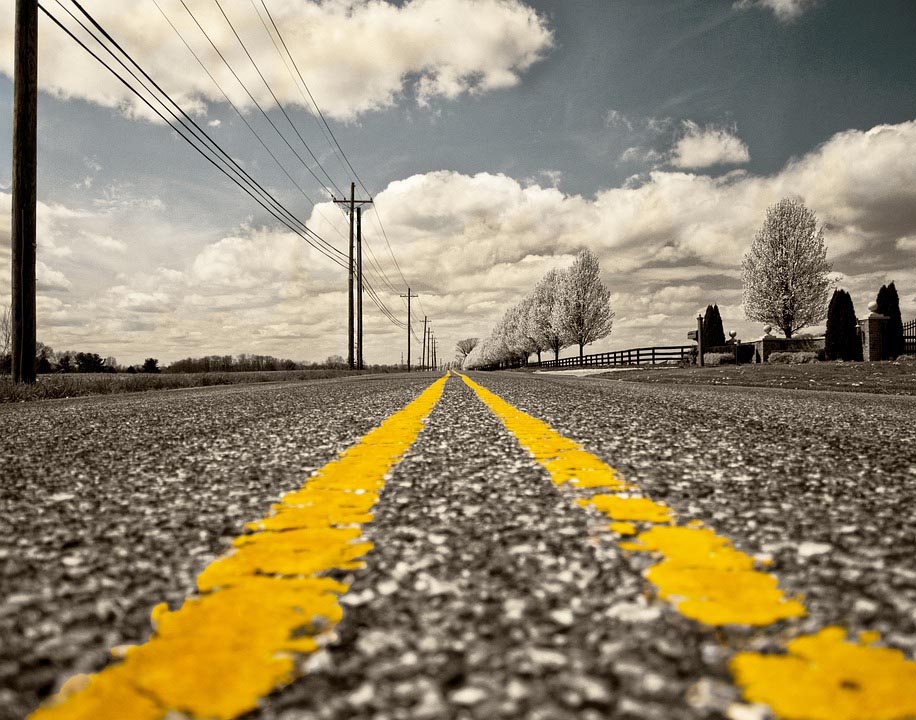Most likely, you commute daily in your automobile. However, do you know what kind of road you are traveling on? Here, we are not referring to metalized or uncatalyzed roadways. There are 5 main types of roads, and each has a unique set of regulations and allowances for overtaking. The colour or pattern of the line running across the center helps to distinguish all of these routes from one another. In this article, we will discuss the different road marking in India.
The Ministry of Road Transport places them strategically throughout the nation according to the environment they are in. To give the general public the safest driving experience possible, they carefully consider the sort of road that should be used in a particular location. Living in India, we are well aware that most of us regularly disobey traffic laws. So let’s educate ourselves so that we can drive safely and securely by making sure we are obeying the traffic laws.
Different types of Roads in India:
1. Broken White Line
This is the most frequently utilized road type across the nation. You may switch lanes, pass another vehicle, and do U-turns if there is a broken white line. However, you must first confirm that it is safe to conduct such a maneuver and that the road is clear. There is a road that has road marking specifications and a road with yellow lines.
2. Continuous White Line:
A solid white line is slightly more restrictive. You cannot make a U-turn or pass another vehicle on this road. Keep traveling straight if you’re on a route like this. Only in order to take turns or prevent accidents is it permitted to cross the line. These roads are typically found in hilly places where accidents are likely. There is a lot more to know about road marking in India.
3. Continuous Yellow Line
On certain routes, overtaking is permitted, but only from your side. No one on either side may cross the yellow line. These roads are typically visible in low-light conditions to remind you to stay on your side of the road. Road marking specification is very important.
4. Double Continuous Yellow line:
The road here may be the strictest on the list. A Double Continuous Yellow line signifies that crossing it on either side is absolutely forbidden. That suggests that there should be no lane changes, or overtaking. Or U-turns. This pattern is typically observed on hazardous 3-lane highways with a high risk. lf catastrophe. This shows the road marking in India.
5. Broken Yellow Line
Possibly the list’s most lenient entry. You are permitted to overtake, make U-turns, and even combine the two when crossing the line. Road with a yellow line depicts this.
About Lane System in India:
The lane system is another crucial element that isn’t observed by practically all Indian road users. The reason for each lane between the road lines is to restrict the kinds of vehicles that can cross them. Sadly, in our nation, lane regulations are hardly observed. People shamelessly disobey all these regulations and essentially drive anywhere they want on our roadways. There are various types of roads as we have discussed earlier like roads with yellow lines. We have also discussed road marking specifications.
This is a significant factor in the rising frequency of traffic accidents here, particularly on the highways. To fully improve the nation’s transportation infrastructure, citizens must be taught how to use the country’s ever-improving road system.
Driving in the Cities
We only have right-hand drive automobiles in India, hence we drive on the left side of the road. In general, the speed you should be driving increases as you move to the right side of the road. Therefore, only slow-moving vehicles are allowed to use the road’s leftmost side. The majority of the roadways in cities have two lanes. Therefore, you would have to stay in the left-most lane while driving slowly.
Driving on the Highways
The majority of accidents in the nation occur on highways. And once more, this is primarily due to individuals not knowing how to drive on freeways. There are signals here, in contrast to city streets. There-lane roadways have become rather typical in our nation. Therefore, as you proceed from the leftmost to the rightmost lane, the structure functions slowly, moderately, then quickly.
On highways, driving in the middle lane is the safest option. The faster cars will easily pass you from the right while the slower ones will primarily be on your left. Road marking in India has become the most common discussion these days.
Conclusion
The use of the high beam is another crucial reminder to have in mind. At greater speeds, there is a lot of windblast on the roadways. In such circumstances, the horn’s honking may not be audible over the sound of the wind.
Read Also:

